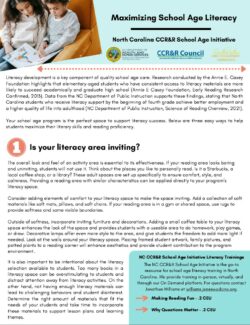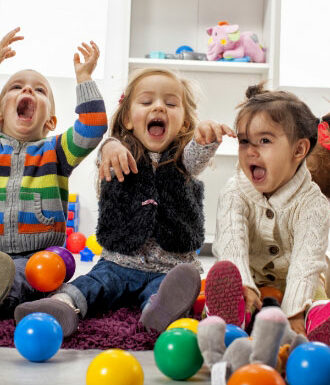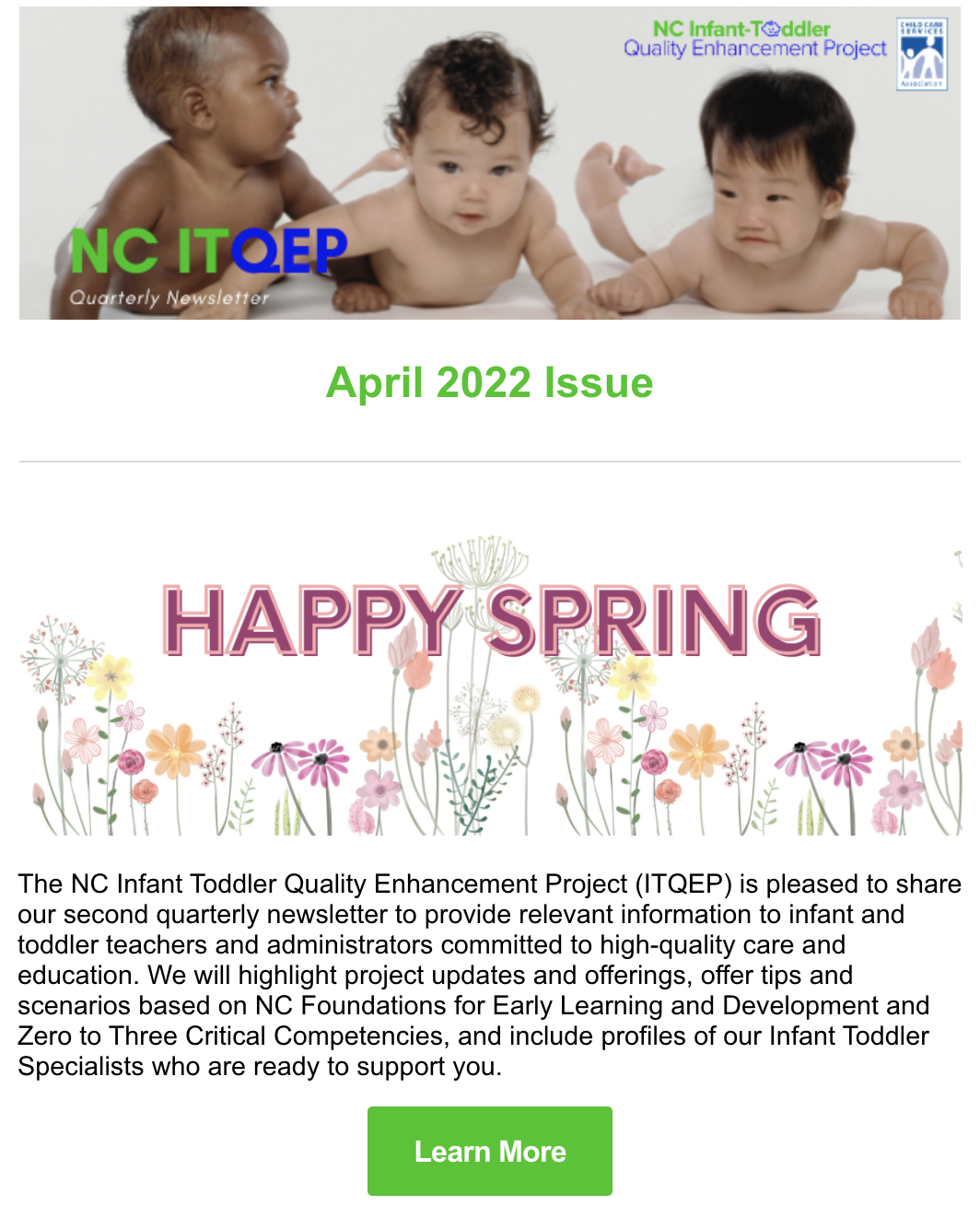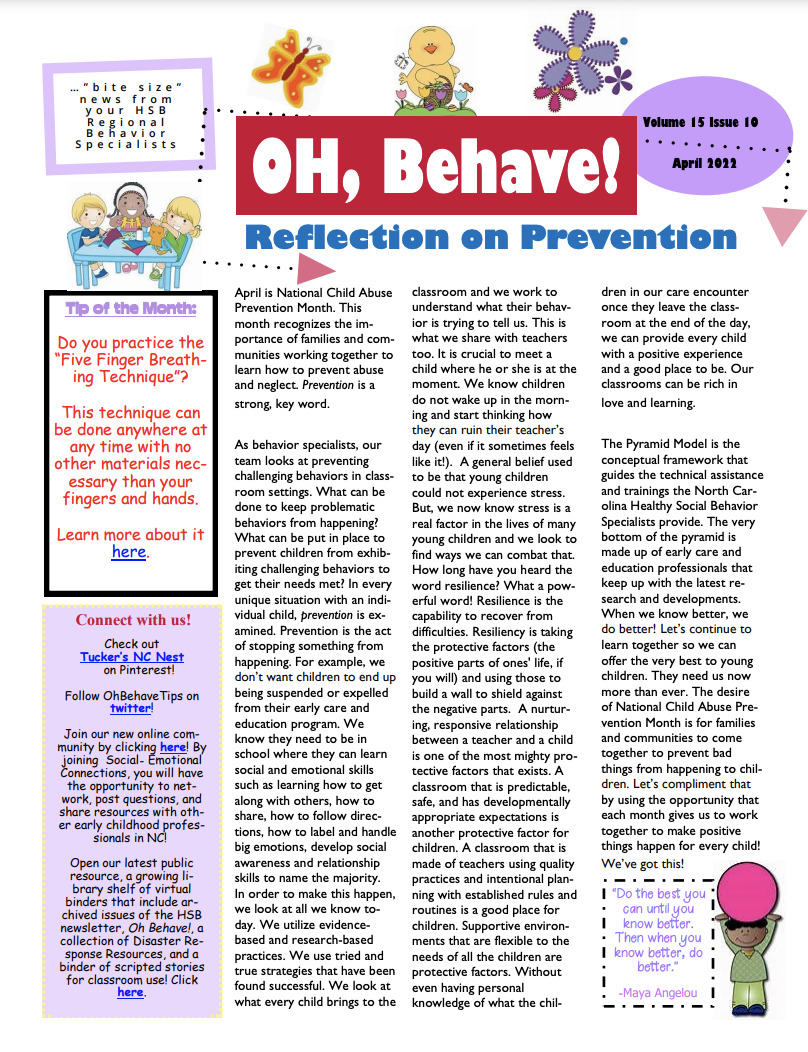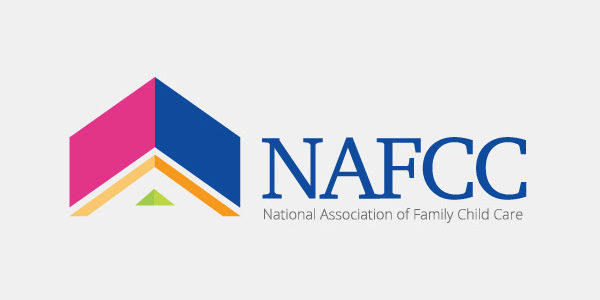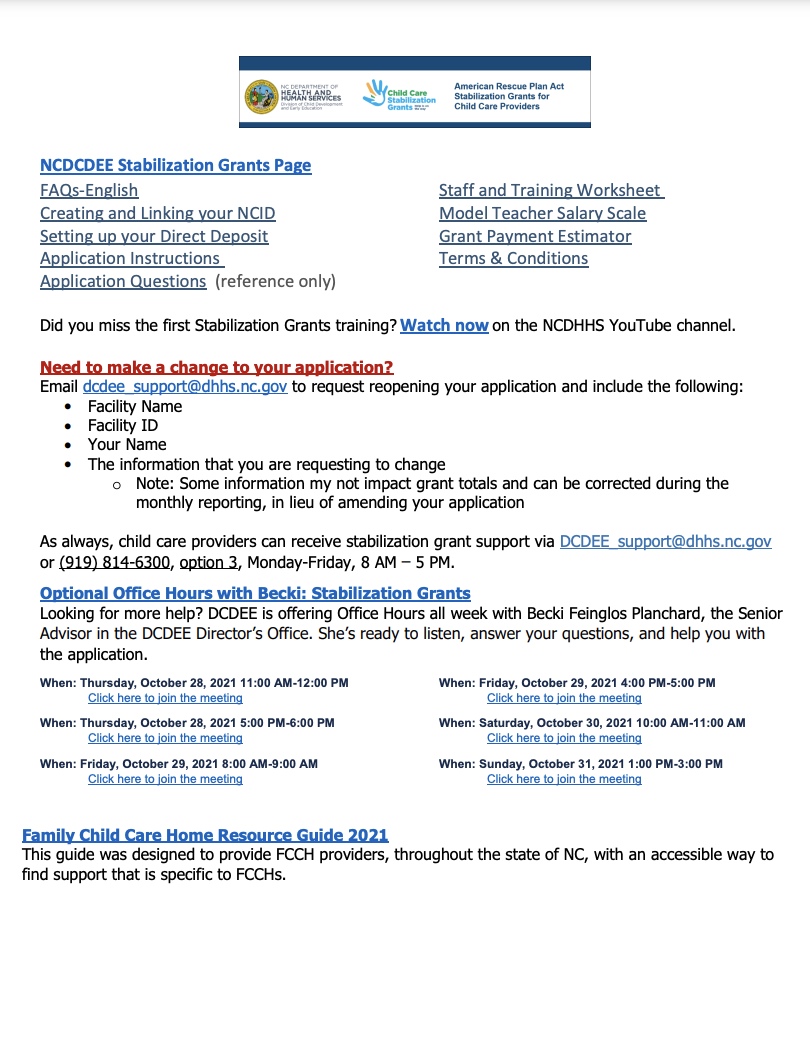HSB Statewide Social Emotional Resources Distribution FY22
Audience Category: For Child Care Providers
Ut enim ad minim veniam, quis nostrud exercitation ullamco laboris nisi ut aliquip ex ea commodo consequat.
Covid-19 Booster Now Available for Children Ages 5-11 (español)
Children ages 5 to 11 years old can receive a COVID-19 booster five months after the date of their most recent Pfizer COVID-19 vaccine dose.
Maximizing School Age Literacy
Supporting School Age Food Insecurity Resource Guide
NC CCR&R School Age Initiative Supporting School Age Food Insecurity Resource Guide
NC Child Care Resource & Referral Council Launches New Website for NC Communities
FOR IMMEDIATE RELEASE MEDIA CONTACT Kara Shultz 919-967-3272 karas@childcareservices.org NC Child Care Resource & Referral Council launches new website to assist families, child care professionals, businesses and communities across North Carolina with essential child care services and support. Chapel Hill, N.C., April 26, 2022: The North Carolina Child Care Resource & Referral Council (NC CCR&R… Continue reading NC Child Care Resource & Referral Council Launches New Website for NC Communities
ITQEP Quarterly Newsletter – April 2022
The NC Infant Toddler Quality Enhancement Project (ITQEP) is pleased to share our second quarterly newsletter to provide relevant information to infant and toddler teachers and administrators committed to high-quality care and education.
OH, Behave! Newsletter – April 2022
April is National Child Abuse Prevention Month. This month recognizes the importance of families and communities working together to learn how to prevent abuse and neglect. For more, make sure you check out our OH Behave! archived newsletters!
News & Events for the NAFCC
Get the latest news and find out about upcoming events from the National Association for Family Child Care.
Child Care Stabilization Grants
On October 7, 2021, Governor Roy Cooper announced a historic, one-time federal $805 million investment in North Carolina’s early care and learning programs. This guide provides FAQs and other resources specifically for Family Child Care Homes.
Family Child Care Environment Rating Scale®, Revised (FCCERS-R)
A thorough revision of the original FDCRS, designed to assess family child care programs conducted in a provider’s home for children from infancy through school-age. Scale consists of 38 items organized into 7 subscales, detailed on this website.


